Is there a future for Gretna's forgotten landmark?
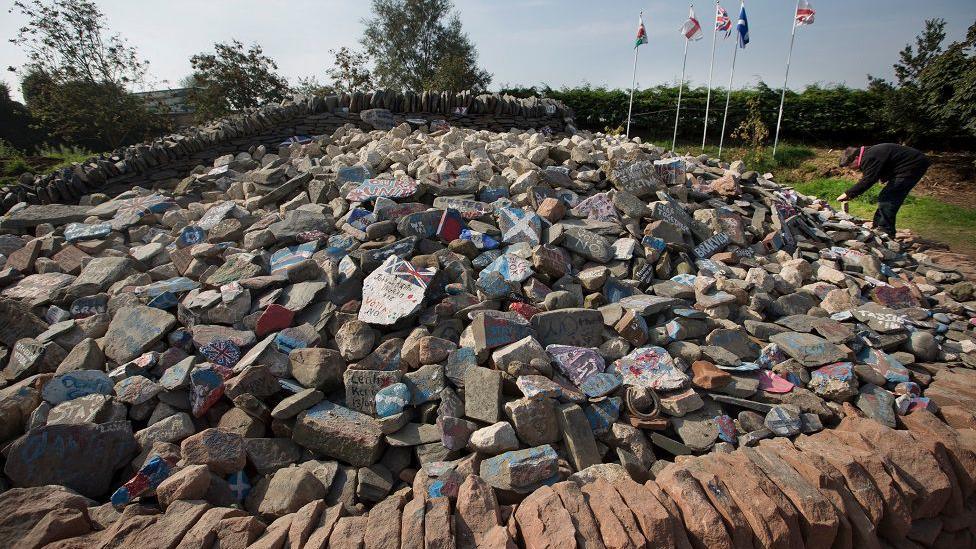
The Auld Acquaintance Cairn in September 2014
- Published
To the untrained eye, it looks like a pile of rubble on the edge of a forgotten caravan park.
The site is surrounded by litter and includes a boarded-up shower block, as well as an industrial storage container.
But 10 years ago this green patch by a busy cross-border motorway was a focal point for those campaigning against Scottish independence.
The Auld Acquaintance Cairn, as it became known, is at risk of becoming a forgotten monument and is increasingly criticised online for appearing run down.
It was the brainchild of politician Rory Stewart, who urged people to make a pilgrimage to Gretna, on the border between Scotland and England.
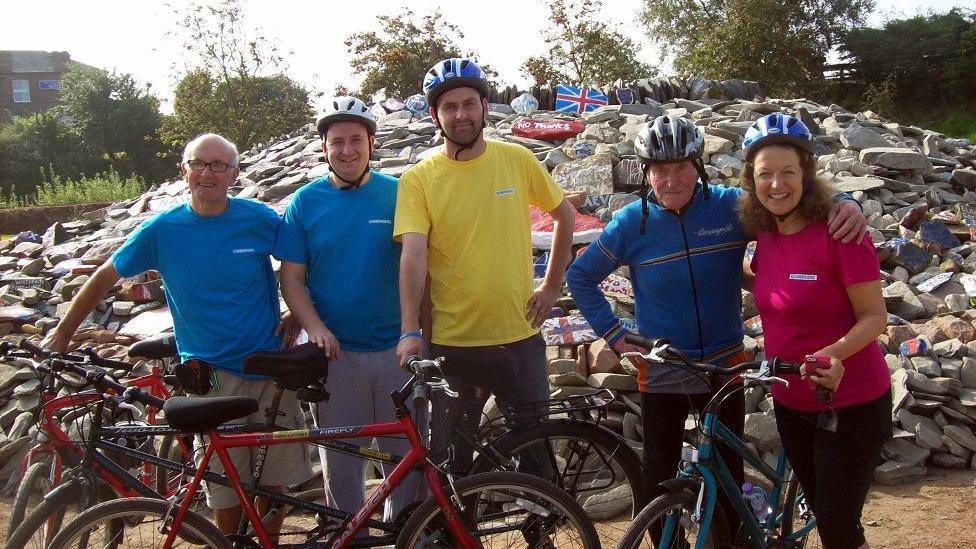
People travelled from afar as the cairn captured peoples imagination in 2014
Thousands of people came to lay a stone, leave a message and take a picture with the mound of rocks during the mid-summer heatwave of 2014, just before the Scottish independence referendum.
While he is now known as a podcaster and academic, back then Mr Stewart was the Conservative MP for Penrith and The Border.
He also led the pro-union Hands Across the Border campaign, which opposed independence.
The group crowdfunded £22,540 to have the cairn built on the edge of a small caravan park near the busy M6/A74(M) road.
The site is close to the famous Old Blacksmiths shop where thousands of eloping couples from England once got married.
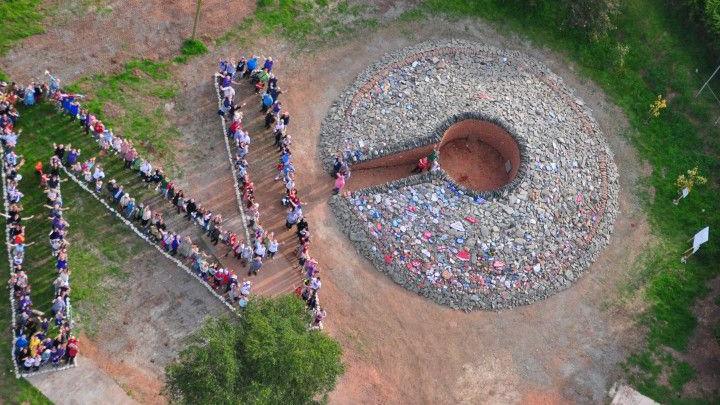
The cairn was widely featured in the news ahead of the 2014 referendum
Mr Stewart admits the idea was born out of the failure of his original plan - to get people standing in a line the length of Hadrian's Wall, from coast to coast.
"I wanted to get people to make a chain of hands with torches," he said.
"The logistics of that completely defeated me. I couldn't understand how to do the parking, for example.
"And you'd have to guarantee you could get 150,000 people to the remotest parts of Cumbria and the Borders. It was all too difficult."
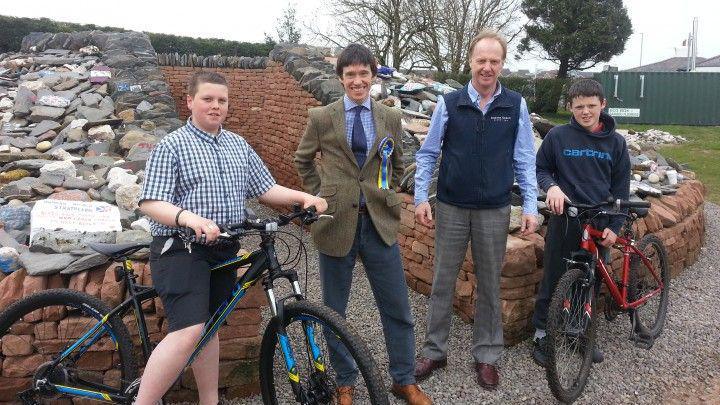
Rory Stewart with the late Alasdair Houston by the cairn in 2015
He then settled on the "much simpler" idea of the cairn and was "incredibly grateful" when the landowner, the late Ali Houston, offered the patch of grass.
Mr Stewart said the independence debate had been "deeply personal" for him, being half-Scottish and half-English.
"I was hoping the cairn became an opportunity for people to demonstrate love and affection.
"It sounds schmaltzy but this was a way people could show they cared."
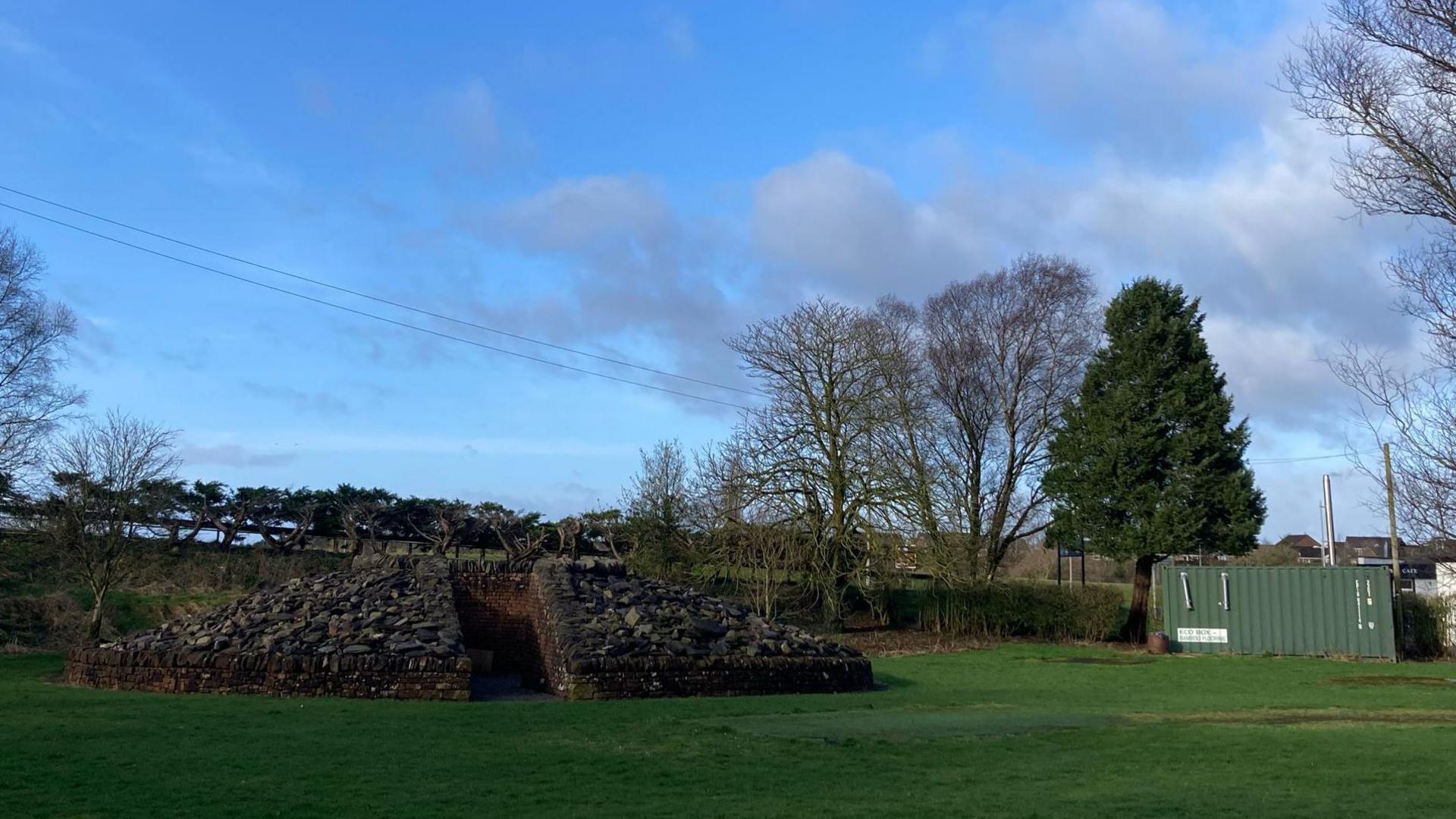
The cairn has a forgotten feel, with a picnic table and litter now sitting within it
He says he still stops at the cairn whenever he passes over the border, and is "surprised it has lasted as well as it has".
Mr Stewart believes any decision on its future should be made by the local community and the wider public.
He would like the cairn to "take a life of its own, like the cairns on the hills north and south of the border".
The former government minister believes it "can symbolise the region" in a similar way that the Angel of the North does, or the Star of Caledonia could.
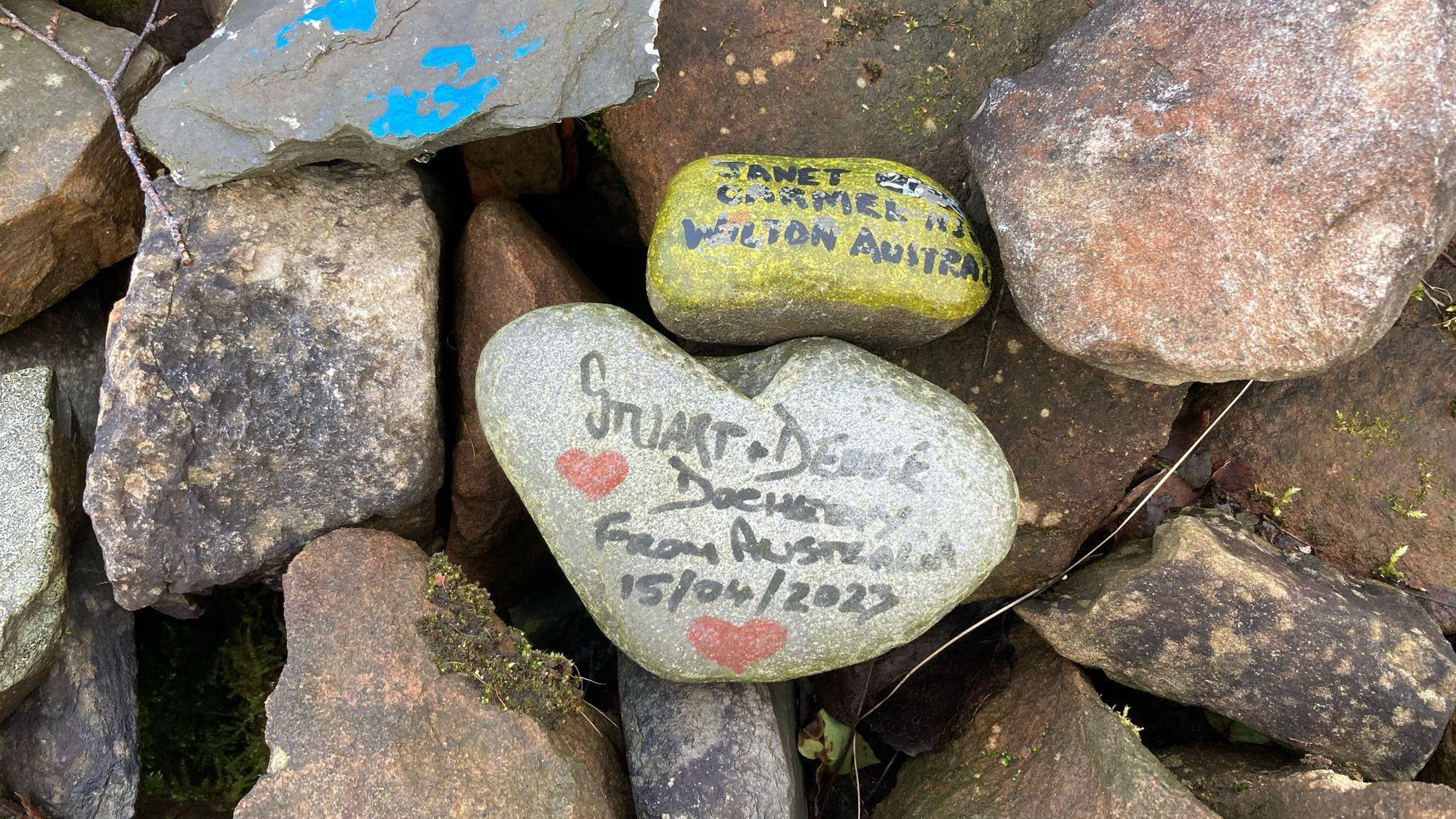
People still leave messages at the cairn, which consists of thousands of stones
Mr Stewart feels the cairn is "more alive" than other sculptures as "its advantage is that it has the people at the heart of it".
However, independence supporters have criticised the cairns and described it as being "born out of the Westminster bubble".
The frame was built by Cumbrian dry stone waller Steven Allen, and was filled in with thousands of stones and rocks, of all different kinds, brought by well wishes.
People do still leave messages and stones at the cairn but it now has a forgotten feel and the speckles of red, white and blue paint that ordained it have washed away.
It has also suffered spates of vandalism and fly-tipping.

Harjit Cheema, of the Gretna Chase Hotel, believes the cairn is popular for tourists
However, Harjit Cheema - owner of the Gretna Chase Hotel, which overlooks the cairn - believes it has "a strong future".
She said: "We find a lot of tourists and cyclists stop in that area to take pictures, so it’s definitely an attraction.
"Gretna's dominated by weddings, so it’s nice for people to visit and stop by for a different reason.
"It would be nice if there were more signs for it, as it’s a way of showing the area's complex history."
Follow the BBC for the South of Scotland on X, external.
Listen to news for Dumfries and Galloway on BBC Sounds.
Get in touch
What stories would you like BBC News to cover from the south of Scotland?